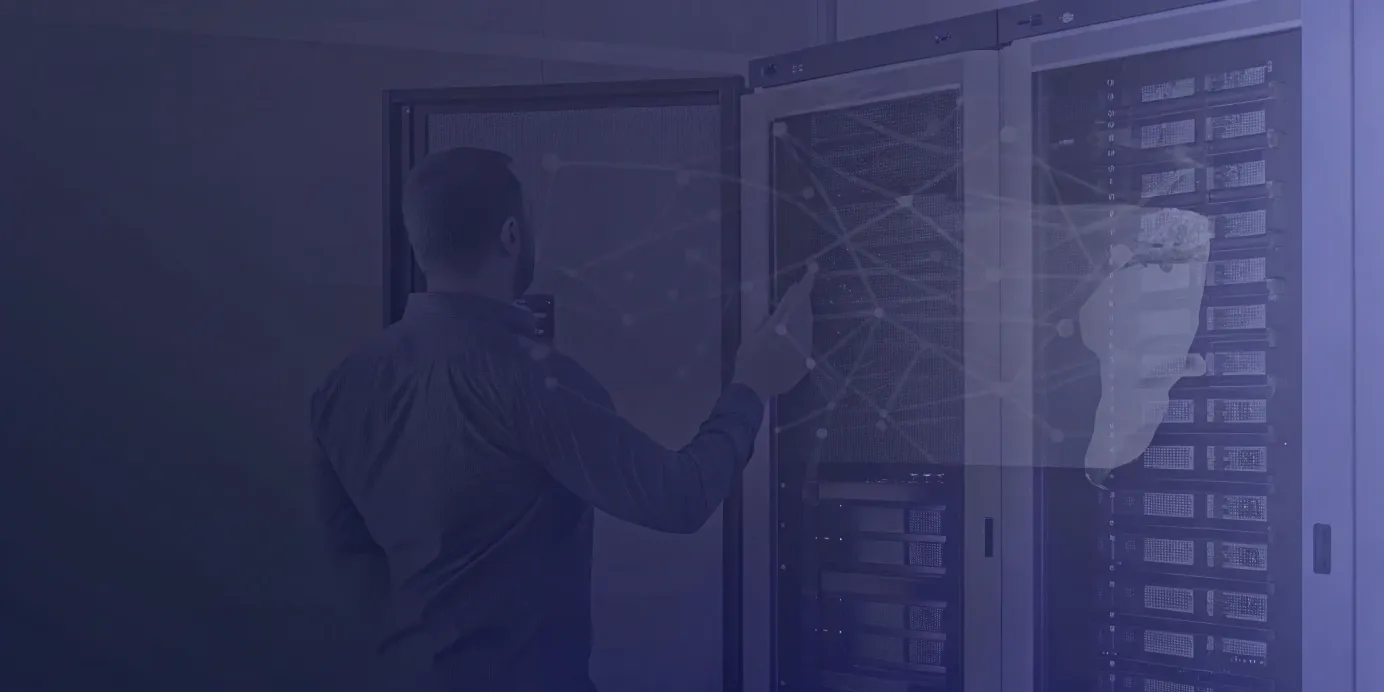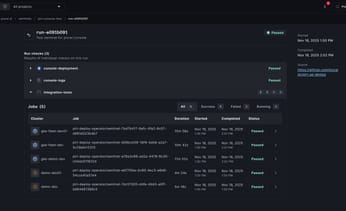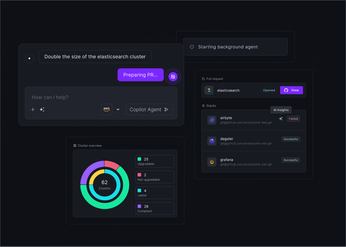
Your Guide to Automated HIPAA Compliance on Kubernetes
Get practical steps and tools for automated HIPAA compliance on Kubernetes, including policy enforcement, access control, and continuous monitoring.
The HIPAA Security Rule doesn’t reference Kubernetes constructs like pods, YAML, or etcd, but platform teams must still interpret its requirements in that context. That means turning abstract mandates such as “access control” and “audit controls” into actionable implementations—RBAC policies, network segmentation, and centralized logging pipelines.
Bridging the gap between compliance language and engineering practice is the real challenge. This guide offers a practical, automation-focused framework for achieving HIPAA compliance in Kubernetes. It covers how to codify security controls, enforce them through admission controllers, and establish a verifiable, auditable system that meets regulatory expectations.
Unified Cloud Orchestration for Kubernetes
Manage Kubernetes at scale through a single, enterprise-ready platform.
Key takeaways:
- Codify compliance with a GitOps workflow: Move beyond manual audits by defining security policies as code with tools like OPA Gatekeeper. This creates a version-controlled, auditable system that automatically prevents non-compliant configurations from being deployed across your clusters.
- Enforce essential technical safeguards: A compliant Kubernetes environment requires a multi-layered security posture. Implement strict RBAC for least-privilege access, use network policies to isolate workloads, encrypt all patient data at rest and in transit, and continuously scan for vulnerabilities.
- Centralize management for scalable oversight: Use a unified platform like Plural to manage security configurations and monitor your entire Kubernetes fleet from a single control plane. This simplifies policy distribution, aggregates security data for easier auditing, and ensures consistent compliance as you scale.
What Is HIPAA Compliance in Kubernetes
The Health Insurance Portability and Accountability Act (HIPAA) sets national standards for protecting sensitive patient health information (PHI). When organizations deploy healthcare workloads on Kubernetes, every layer of the stack (from infrastructure and control plane components to containerized applications) must meet these standards. Noncompliance can lead to severe penalties, security incidents, and loss of trust. Achieving compliance requires designing clusters, workloads, and policies with security and privacy as foundational principles.
Understanding Key HIPAA Requirements
HIPAA compliance in Kubernetes focuses on ensuring that all PHI-handling workloads operate within a secure, auditable, and access-controlled environment. Compliance extends beyond the application code to the entire operational ecosystem. Platform and DevOps teams must be able to demonstrate that their Kubernetes clusters enforce strict isolation, integrity protection, and data confidentiality through continuous monitoring and secure configuration management.
The Security and Privacy Rules Explained
HIPAA’s Security and Privacy Rules define technical safeguards that map directly to Kubernetes configurations and practices. Clusters must ensure data availability, confidentiality, and integrity through:
- Availability: High-availability (HA) architectures and redundancy to minimize downtime and data loss.
- Access Control: Strict enforcement using Kubernetes Role-Based Access Control (RBAC), ensuring only authorized entities can interact with PHI.
- Encryption: Data encryption both at rest (e.g., in etcd) and in transit via TLS.
- Audit Controls: Centralized logging and audit trails that record every access and configuration change, enabling traceability during security reviews.
How HIPAA Impacts Container Environments
HIPAA compliance adds significant responsibility to managing containerized workloads. A single misconfigured YAML or permissive policy can expose PHI. Compliance requires embedding security controls throughout the container lifecycle—verifying image integrity, enforcing network isolation between pods, and managing secrets through secure backends.
By codifying these safeguards, healthcare organizations can safely harness Kubernetes’ scalability and automation without compromising compliance. Platforms like Plural simplify this process by automating policy enforcement, maintaining consistent configurations, and providing a unified compliance posture across clusters.
Essential Tools to Automate HIPAA Compliance
Achieving HIPAA compliance in Kubernetes isn’t just about secure configurations—it’s about sustaining them in a constantly changing environment. Manual audits fall short in dynamic clusters where pods, workloads, and configurations evolve by the minute. Continuous, automated enforcement is the only viable path to compliance at scale. By codifying policies and embedding them into your infrastructure pipelines, you ensure consistency, traceability, and resilience across every cluster. Automation not only minimizes human error but also provides an auditable, real-time record of compliance across your environment. The following tools and practices form the foundation of a robust, automated HIPAA compliance framework.
Enforce Policies with OPA
Open Policy Agent (OPA) provides a policy-as-code model that brings consistency and automation to Kubernetes compliance. With OPA, you can write declarative rules to prevent non-compliant deployments before they reach production—ensuring, for instance, that PersistentVolumes are encrypted, containers don’t run as root, and images come only from trusted registries. These policies create a verifiable compliance layer that enforces security automatically.
Plural integrates tightly with OPA Gatekeeper, enabling centralized policy management across clusters. Through its GitOps-driven UI, platform teams can deploy, track, and audit policies fleet-wide with minimal manual intervention.
Scan and Monitor for Vulnerabilities
Continuous vulnerability management is critical to HIPAA compliance. Tools like Trivy, Kube-bench, and Kube-hunter allow you to scan images, nodes, and configurations for known CVEs and misconfigurations. Integrating these scanners into CI/CD pipelines ensures that issues are caught early, while ongoing scans of production clusters help identify emerging threats.
Plural aggregates vulnerability data across your fleet, giving you a unified dashboard to visualize CVEs, assess risk severity, and prioritize remediation—creating a single source of truth for cluster security.
Control Access and Authentication
Strict access control is a cornerstone of HIPAA’s Security Rule. In Kubernetes, this centers around Role-Based Access Control (RBAC). RBAC allows granular permission management, ensuring users and services operate under a least-privilege model. Developers, operators, and automation systems should have only the access required for their roles—no more.
Plural’s integrated Kubernetes dashboard uses OIDC authentication with Kubernetes Impersonation, mapping user identities directly to cluster roles. This simplifies RBAC configuration and enforces identity-aware access across clusters, eliminating the overhead of managing permissions manually.
Manage Secrets Securely
Secrets mismanagement remains one of the leading causes of data breaches. Credentials, tokens, and certificates must never be stored in plaintext or embedded in images. While Kubernetes Secrets offer basic functionality, compliance-grade protection requires dedicated tools like HashiCorp Vault. Vault supports dynamic secret generation, encryption-as-a-service, and full audit trails—ensuring data remains encrypted in transit and at rest.
Plural enforces consistent secrets management deployment through its GitOps workflow, allowing platform teams to standardize and version-control their secrets architecture across clusters.
Use Infrastructure as Code (IaC)
Infrastructure as Code (IaC) turns compliance into code, making your infrastructure reproducible, auditable, and reviewable. Using tools like Terraform, you can define your networking rules, storage configurations, and access controls declaratively. Every infrastructure change goes through version control, reviews, and approvals, providing an immutable audit trail that aligns with HIPAA’s documentation requirements.
Plural Stacks extends IaC with an API-driven management layer for Terraform. It enables self-service, compliant infrastructure provisioning through GitOps workflows—ensuring every deployment adheres to your defined security and compliance standards automatically.
How to Implement Automated Security Controls
Automated security controls are the backbone of HIPAA compliance in Kubernetes. By embedding enforcement directly into your infrastructure, you eliminate manual gaps, reduce human error, and ensure a consistent security posture across clusters. Automation turns compliance into a continuous process—policies are codified, applied uniformly, and monitored in real time. The goal is to make security an intrinsic part of your Kubernetes architecture, not a post-deployment patchwork.
Platforms like Plural streamline this process by managing the deployment and configuration of security tools from a centralized control plane. Whether you operate across multiple clouds or on-prem environments, Plural helps maintain consistent enforcement and visibility across your fleet. The following sections outline the essential security controls to automate and how to implement them effectively.
Secure and Isolate Your Network
HIPAA mandates strict control over access to electronic Protected Health Information (ePHI). In Kubernetes, this means isolating workloads and controlling inter-pod communication. Kubernetes Network Policies serve as the foundation, acting as a firewall for pods. The best practice is to apply a deny-by-default policy, explicitly whitelisting only the traffic necessary for application functionality.
Network isolation limits unauthorized access and minimizes the blast radius of potential breaches. CNI plugins like Calico and Cilium provide robust enforcement and visibility for these policies. Using Plural, you can deploy and manage a consistent set of Network Policies across all clusters via a Global Service, ensuring uniform application of isolation rules without manual upkeep.
Establish Container Security Standards
Container security is critical for preventing unauthorized access and privilege escalation. Start by enforcing Role-Based Access Control (RBAC) to implement least-privilege principles. Define granular Roles and ClusterRoles and bind them only to the necessary users or groups to restrict access to the Kubernetes API and sensitive resources.
Plural integrates with your OIDC provider to simplify RBAC management, letting you map existing identity groups to Kubernetes roles. Beyond RBAC, enforce pod-level security measures such as running containers as non-root users, mounting read-only file systems, and restricting image sources to trusted registries. Combined, these controls form a strong foundation against container-level exploits.
Encrypt Data at Rest and in Transit
HIPAA requires encryption of ePHI in every state—both at rest and in transit. For data in transit, enforce TLS for all communications, including ingress traffic and internal service-to-service calls. Implementing a service mesh like Istio or Linkerd enables automated mutual TLS (mTLS), ensuring encrypted communication between all pods.
For data at rest, encrypt secrets stored in etcd and persistent volumes containing PHI. Use cloud-native key management systems such as AWS KMS or Google Cloud KMS to manage encryption keys securely. Plural Stacks automates infrastructure provisioning with encryption enabled by default, enforcing correct storage class and KMS configurations through Terraform.
Set Up Audit Logging and Monitoring
HIPAA compliance requires detailed audit trails for every interaction with systems containing PHI. Enable Kubernetes audit logging to capture all API server activity, then ship these logs to a secure, centralized logging service for retention and analysis. Centralized logs provide traceability for investigations and demonstrate compliance during audits.
Extend your visibility to runtime behavior using tools like Falco, which detect anomalies and policy violations in real time. Plural’s unified console aggregates logs, metrics, and alerts across your fleet, giving you a single observability layer to track and enforce audit and monitoring requirements consistently.
Plan for Backup and Disaster Recovery
HIPAA’s availability requirements demand a reliable backup and disaster recovery (DR) strategy. Both application data (PHI stored in databases or volumes) and cluster configurations must be backed up regularly to a secure, off-site location. Velero is purpose-built for Kubernetes, automating backups and restores for cluster resources and persistent volumes.
Schedule backups automatically and validate recovery procedures through periodic DR tests. Using Plural, you can include Velero as a standard part of your stack, ensuring that every cluster in your fleet has a consistent, compliant, and fully automated backup and recovery strategy.
Best Practices for Automated Compliance
Achieving automated HIPAA compliance in Kubernetes isn’t about deploying a single tool—it’s about building a repeatable, policy-driven system that embeds security into every stage of your workflow. The objective is to make the compliant path the default path for your developers and operators. By codifying security policies, managing all configurations through version control, and continuously monitoring for deviations, you shift from periodic audits to continuous assurance.
Automation turns compliance into an operational standard rather than an event. These best practices outline how to translate HIPAA’s broad requirements into concrete, automated controls that integrate directly into your Kubernetes lifecycle—from configuration and access management to encryption and monitoring.
Manage Security Configurations
Consistent, secure configurations are the foundation of HIPAA compliance. Misconfigurations are among the most common sources of breaches, and manual updates can’t scale across multiple clusters. Adopting Infrastructure as Code (IaC) tools like Terraform and GitOps for Kubernetes manifests ensures all configurations are versioned, peer-reviewed, and auditable.
Plural Stacks extends this model with an API-driven framework for managing Terraform workflows, enabling teams to define and enforce uniform security baselines—network policies, resource quotas, and encryption defaults—across every environment. This prevents configuration drift and ensures compliance from the moment clusters are provisioned.
Define Your Access Control Strategy
HIPAA’s Security Rule requires strict access control, ensuring that only authorized users can access electronic Protected Health Information (ePHI). In Kubernetes, Role-Based Access Control (RBAC) enforces these principles. Implement least-privilege access by defining granular roles and mapping them to specific users or groups.
Plural integrates seamlessly with your OIDC provider, enabling single sign-on (SSO) and centralized identity management. By managing RBAC policies as code within your GitOps pipeline, you maintain consistent permissions across clusters, avoid mismanaged kubeconfigs, and ensure that access rights remain auditable and up to date.
Protect Data at Every Stage
HIPAA requires a defense-in-depth approach to protecting ePHI, ensuring encryption both at rest and in transit. For data at rest, encrypt etcd, persistent volumes, and object storage buckets using managed encryption services such as AWS KMS or GCP KMS. For data in transit, enforce TLS on all ingress and service-to-service communication.
A service mesh like Istio can enforce mutual TLS (mTLS) automatically across all internal traffic, while cert-manager, deployable via Plural, automates certificate issuance and renewal. Together, these tools ensure encryption is consistently applied without manual intervention, keeping data secure throughout its lifecycle.
Automate Policy Enforcement
Static policy reviews can’t keep pace with Kubernetes’ dynamic workloads. Tools like OPA Gatekeeper let you implement policy as code, enforcing security rules directly at the Kubernetes API level. You can automatically block deployments that violate HIPAA controls—for example, containers running as root, missing required labels, or using unapproved image registries.
Plural integrates OPA Gatekeeper management into its workflow, providing a centralized interface for deploying and maintaining consistent policy enforcement across all clusters. This ensures that non-compliant resources never reach production.
Monitor Compliance Continuously
HIPAA compliance requires continuous monitoring and the ability to detect and respond to threats in real time. A robust observability stack should aggregate logs, metrics, and security events across your Kubernetes fleet. Runtime security tools like Falco can detect policy violations or unusual behavior as they occur.
Plural’s unified dashboard consolidates this data into a single pane of glass, providing full visibility into vulnerabilities, audit logs, and runtime alerts. This enables security and compliance teams to detect, investigate, and respond to potential incidents proactively, maintaining a strong compliance posture around the clock.
How to Manage Compliance at Scale
Managing HIPAA compliance across a handful of Kubernetes clusters is challenging enough. When you scale to dozens or hundreds, manual checks and inconsistent configurations become untenable. At scale, automation isn't just a convenience; it's a necessity for maintaining a secure and compliant posture. A centralized management platform is critical for enforcing policies, monitoring for threats, and responding to incidents consistently across your entire fleet. This approach ensures that as your environment grows, your compliance framework scales with it, without introducing human error or operational bottlenecks. With a unified platform, you can apply a consistent set of controls and gain the visibility needed to prove compliance, no matter how large or distributed your infrastructure becomes.
Solve Common Policy Management Challenges
A primary challenge at scale is ensuring every cluster adheres to the same set of security and compliance policies. Configuration drift is a constant risk, where individual clusters deviate from the established baseline. To combat this, you need to automate policy enforcement across your entire infrastructure. This involves defining proactive security measures like encryption requirements, access controls, and audit policies as code.
Tools like OPA Gatekeeper are essential for this. Gatekeeper is a Kubernetes admission controller that validates resource requests against a library of policies before they are applied to a cluster. With Plural, you can define your Gatekeeper policies in a central Git repository and use a GlobalService to automatically sync them to every cluster in your fleet. This GitOps-based workflow ensures that every cluster has the exact same policy set, providing a single source of truth and an auditable history of every policy change.
Select the Right Security Monitoring Tools
Continuous monitoring is a cornerstone of HIPAA compliance, but aggregating data from a distributed fleet of clusters can be complex. To maintain visibility, you need tools that can watch your systems in real-time to spot and react to threats quickly. Open-source tools like Prometheus are standard for collecting metrics and alerting on anomalies, while Falco is excellent for detecting suspicious runtime behavior within your containers.
The key is not just deploying these tools, but managing them and their data effectively. Plural simplifies this by allowing you to deploy and manage monitoring agents as part of your standard application stack. More importantly, Plural’s single-pane-of-glass console provides a centralized view of your entire fleet. This means you can observe logs, metrics, and security events from all your clusters in one place, without needing to juggle multiple dashboards or contexts.
Automate Your Incident Response
When a security event occurs, a swift and consistent response is critical to minimize potential impact and meet HIPAA breach notification requirements. Manual incident response is too slow and error-prone for modern infrastructure. Instead, you should have a clear, automated plan for what to do when a breach is detected. This starts with configuring your monitoring tools to trigger automated alerts for specific security events, such as a container running an unauthorized process.
These alerts should kick off automated workflows. For example, a Falco alert could trigger a script that cordons the affected node and isolates the suspicious pod. Plural’s GitOps foundation also plays a key role in remediation. If a vulnerability is discovered, you can push a patch to your Git repository, and Plural CD will automatically roll out the fix across all affected services in your fleet. This ensures that remediation is applied rapidly and consistently.
Streamline Documentation and Reporting
HIPAA audits require meticulous documentation. You must be able to prove that your security controls are in place and operating effectively. This includes keeping detailed records of every action taken in the system—who did what, when, and what data they accessed. Manually compiling this information from dozens of clusters is a monumental task.
This is another area where a GitOps workflow provides a significant advantage. By managing your entire cluster configuration—from applications to security policies—in Git, you create an inherent audit trail. Every commit provides a timestamped record of what changed, who changed it, and why. Plural builds on this by providing a centralized history of all deployments and configuration changes across your fleet. During an audit, you can easily pull reports and demonstrate compliance without having to manually collate logs from each individual cluster.
Test and Validate Controls Automatically
Compliance is not a one-time setup; it requires continuous validation. You must regularly check your Kubernetes environment and the applications running on it for known security weaknesses. This process should be automated and integrated directly into your development lifecycle. Tools like Trivy can be used to scan container images for CVEs as part of your CI/CD pipeline, preventing vulnerable code from ever reaching production.
Plural helps you manage the deployment of these security tools, such as the Trivy operator, across your fleet to ensure continuous scanning of running workloads. Plural also aggregates CVE scan data, giving you a clear, centralized view of vulnerabilities across all your clusters. This allows you to quickly identify which clusters are affected by a new CVE and prioritize remediation based on severity. By automating vulnerability scanning and control validation, you can ensure your environment remains compliant and secure against emerging threats.
Build a Sustainable Compliance Framework
Building a sustainable compliance framework means moving beyond periodic, manual checks. For Kubernetes, this requires embedding security and compliance directly into your operational workflows. The goal is to create a system where compliance is a continuous, automated process, not a bottleneck. This approach ensures that as your environment scales and evolves, your compliance posture remains strong and auditable without slowing down development. A sustainable framework is built on integration, continuous improvement, verification, and automated enforcement.
Integrate Compliance into Your DevOps Workflow
To achieve continuous compliance, you must integrate security controls directly into your DevOps practices. Instead of treating compliance as a final gate before production, build it into your CI/CD pipeline. A GitOps-based workflow is ideal for this, as it provides a version-controlled, auditable trail for every change made to your clusters. By defining your infrastructure, applications, and compliance policies as code, you can automate reviews and deployments.
Plural’s continuous deployment capabilities are built on this principle. By managing your Kubernetes manifests and policies in Git, you can establish HIPAA-compliant workflows where every change is automatically validated against your security standards before it’s applied, ensuring protected health information (PHI) is consistently safeguarded.
Evolve and Update Your Policies
HIPAA regulations and the threat landscape are not static. Your compliance framework must be flexible enough to adapt to new requirements and vulnerabilities. Managing policy updates across a large fleet of Kubernetes clusters can be challenging, but automation simplifies this process significantly. Storing your policies—such as OPA Gatekeeper constraints—in a central Git repository allows you to manage them like any other piece of code.
When a policy needs to be updated, you can submit a pull request, which can be reviewed, tested, and approved through a standardized process. Plural’s PR automation can then orchestrate the rollout of these changes across all relevant clusters, ensuring consistent application and reducing the risk of configuration drift.
Verify Compliance with Confidence
Meeting HIPAA requirements means you must be able to prove that your controls are working effectively. This requires continuous monitoring and the ability to easily audit your environment to ensure the confidentiality, integrity, and availability of PHI. Manual verification is slow and prone to error, especially in dynamic Kubernetes environments. You need a centralized way to observe the state of your clusters and security configurations.
Plural provides a single-pane-of-glass console that offers a unified view across your entire Kubernetes fleet. The embedded dashboard allows you to inspect cluster resources, review configurations, and access audit logs without juggling multiple tools or credentials. This centralized visibility simplifies the process of verifying compliance and gathering evidence for audits.
Develop an Automated Enforcement Strategy
A robust compliance framework relies on automated enforcement to prevent non-compliant configurations from ever reaching production. This is where Kubernetes admission controllers like OPA Gatekeeper become critical. These tools act as policy engines, automatically validating every request to the Kubernetes API against a predefined set of rules. For example, you can enforce policies that require data encryption, restrict network access, or mandate specific security contexts for pods.
Plural streamlines the deployment and management of these enforcement tools across your clusters. By automating policy enforcement, you can ensure that HIPAA standards are consistently applied, significantly reducing the risk of human error and security gaps. This allows your team to maintain a strong security posture without creating friction for developers.
Related Articles
- Kubernetes Adoption: Use Cases & Best Practices
- Kubernetes Cluster Security: A Deep Dive
- Kubernetes Security Posture Management (KSPM) Guide
Unified Cloud Orchestration for Kubernetes
Manage Kubernetes at scale through a single, enterprise-ready platform.
Frequently Asked Questions
My cloud provider is HIPAA compliant. Does that mean my Kubernetes clusters running on it are also compliant? No, this is a common misconception. While using a HIPAA-compliant cloud provider like AWS or GCP is a necessary first step, it only covers the physical and infrastructure layers of security. Under the shared responsibility model, you are still responsible for securing everything you build on top of that infrastructure. This includes configuring your Kubernetes clusters, securing your container workloads, managing access controls, implementing network policies, and encrypting data within the cluster. Your provider handles the security of the cloud, but you are responsible for security in the cloud.
What's the most common mistake teams make when trying to achieve HIPAA compliance in Kubernetes? One of the most frequent oversights is neglecting network security within the cluster. By default, Kubernetes allows all pods to communicate with each other, which is not a secure configuration for handling sensitive patient data. A critical step is to implement a "deny-by-default" network policy and then explicitly allow only the necessary traffic between services. Failing to properly isolate workloads creates a significant attack surface and is a direct violation of the technical safeguards required by HIPAA.
How does using a GitOps workflow specifically help with HIPAA audits? A GitOps workflow provides an immutable, chronological audit trail for your entire infrastructure. Since every change to your cluster's configuration—from application deployments to security policies—is managed through version-controlled code in a Git repository, you have a clear record of what changed, who made the change, and when it was approved. During an audit, you can point directly to this history to demonstrate that your controls are consistently enforced and that all modifications followed a documented review process, rather than trying to piece together evidence from disparate logs.
Can a platform like Plural make my organization HIPAA compliant? Plural is a powerful tool that automates the implementation and management of the technical controls required for HIPAA, but it cannot make your organization compliant on its own. HIPAA compliance is a combination of technology, processes, and policies. Plural provides the platform to enforce technical safeguards like consistent policy deployment, centralized monitoring, and automated vulnerability scanning at scale. However, your organization is still responsible for defining the correct policies, training staff, and managing administrative procedures. Plural streamlines the technical side, making it easier to build, maintain, and prove a compliant environment.
We're just starting out. What are the first few technical controls we should automate? If you're just beginning, focus on three foundational areas. First, automate the enforcement of Role-Based Access Control (RBAC) based on the principle of least privilege to control who can access and modify cluster resources. Second, implement network policies to isolate workloads and control traffic flow. Third, deploy a policy-as-code tool like OPA Gatekeeper to enforce basic security standards, such as preventing containers from running with root privileges or pulling images from untrusted registries. Automating these core controls establishes a strong security baseline to build upon.
Newsletter
Join the newsletter to receive the latest updates in your inbox.









